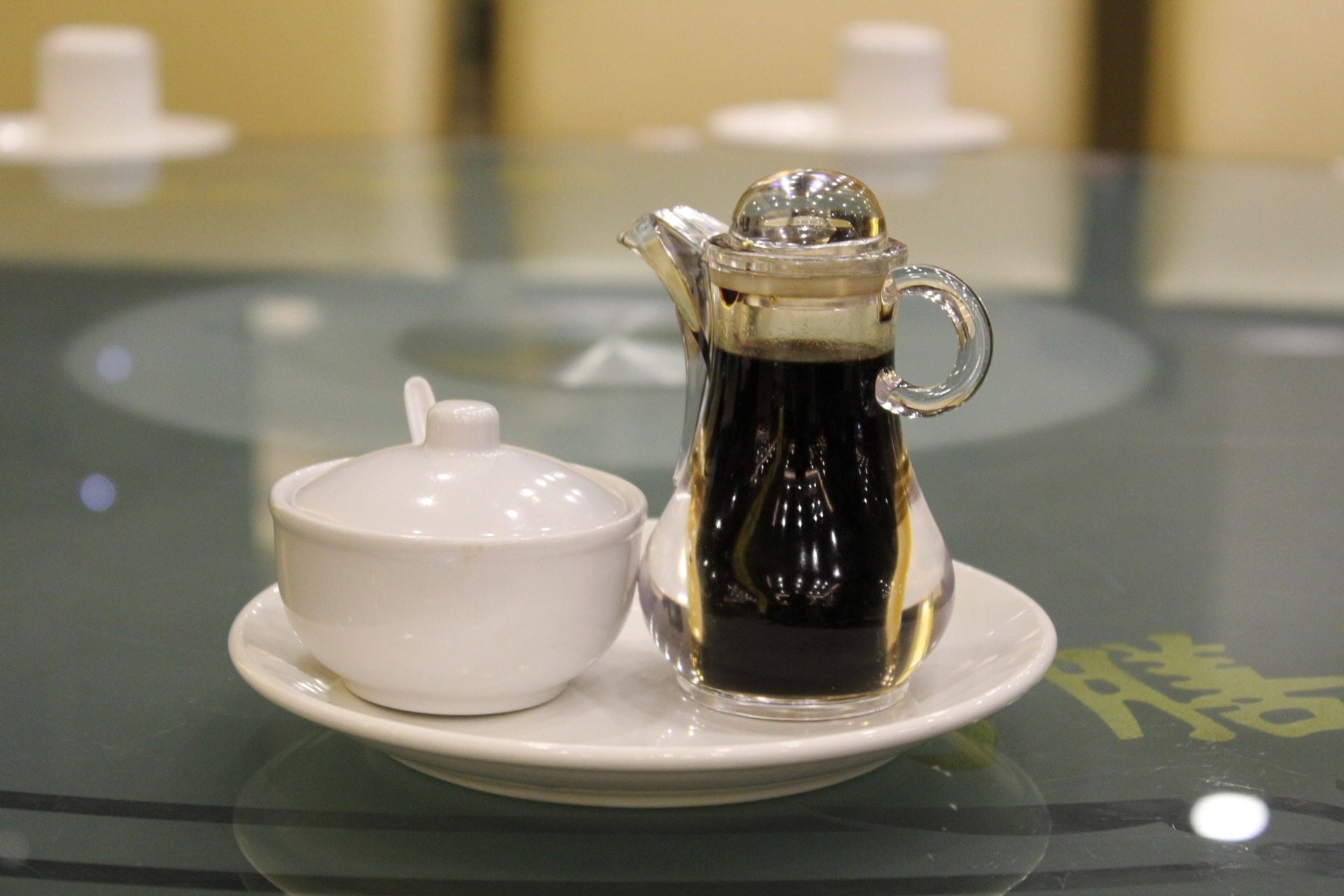Simple Solution… If you think of soy sauce as the salty brown liquid that comes with Chinese take out, think again and, please, experience the mellowness and richness of good soy sauce that awaits.
People today are discovering and insisting upon authentic, traditionally brewed soy sauces of which there are two types, shoyu and tamari. What is true soy sauce and how do you select and use it?
You won’t find a good soy sauce any easier than a good bottle of wine. There’s just too much junk out there. Usually it requires a bit of an effort, but it’s sure worth it.
Shoyu is the Japanese word for soy sauce made of soybeans, roasted wheat, sea salt, and koji (Aspergillus oryzae), mold spores that when exposed to moisture begin growing giving rise to unique enzymes that create the fermentation process.
This is the all-purpose cooking and condiment soy sauce made since the 1600s in Japan.
A true shoyu’s most prized quality is not its own flavor, rather its strong ability to harmonize and enhance the flavor of foods. Its complex natural gives it a deep flavor and beautiful bouquet.
These qualities are the result of long, slow fermentation. Fermentation is the process of koji enzymes breaking proteins down into amino acids and carbohydrates into simple sugars, so it’s an easily assimilable food requiring little energy of us to digest.
Tamari literally means liquid pressed from soybeans, originally it was the thick brown liquid that pooled in casks of fermenting soybean miso. For centuries this tamari was a rare delicacy reserved for special occasions.
Eventually producers learned to brew tamari as a liquid soy sauce that had similar characteristics as the original by-product of miso.
This tamari is brewed from whole soybeans, sea salt, water, and koji (Aspergillus hacho). Tamari is wheat free and popular with those who have wheat allergies.
In the 1960s George Ohsawa introduced macrobiotics to the West, and introduced a soy sauce that he called tamari to North America and Europe. This soy sauce was actually shoyu.
Mr. Ohsawa wanted to distinguish naturally made soy sauce from commercial, chemically processed soy sauces that were marketed under the name of shoyu. Unfortunately, he did not anticipate the introduction of actual tamari into the West.
Misnaming shoyu soy sauce tamari led to much confusion in the 1980s when actual tamari was introduced and marketed as wheat free tamari. This confusion lingers.
It is said that tamari soy sauce implants its flavor in food, while shoyu soy sauce harmonizes, enhances flavors and bouquet.
They are very different in nature. Tamari is most commonly used in food processing, while Shoyu is most commonly used in the kitchen and at the table.
Shoyu is best for everyday cooking such as stir frying or seasoning vegetables, as it harmonizes and enhances without overpowering.
Tamari, with its stronger flavor, is traditionally used to season longer cooking food such as soups, stews, and baked dishes. Both tamari and shoyu are good in marinades and salad dressing, to flavor grilled food, and on the table as condiment or dipping sauce.
Neither should be limited to any particular type of food because they are far too tasty and versatile.
Carefully choose your soy sauce as you would an olive oil or a fine wine. Look for the words traditionally brewed and natural or organic, and make sure the manufacturer backs this up.
Real shoyu is made by artisan’s skilled in the ancient method of koji fermentation, a complex process using koji inoculated whole soybeans, wheat, careful tending and aging in cedar casks through two cycles of the seasons.
Tamari should be similarly crafted but without wheat.
By contrast, commercial soy sauces (even some labeled as shoyu or tamari) are usually made from soybeans that have been defatted with hexane, a petroleum derivative.
Common shortcuts are artificial fermentation methods including genetically engineered enzymes. In fact most soy sauce is actually caramel colored water with lots of salt, hydrochloric acid treated soy isolate, and sugar added.
Traditionally brewed soy sauces are an ideal replacement for, and improvement over salt. Use a little and experience the blossoming of flavor.
In the age of East meets West, these soy sauces are a great gift to the culinary endeavors in the west. Get some for your pantry the first chance you have.
You can find much more information on living a holistic lifestyle in these free magazines and on our YouTube channel.
Lakshmi Harilela – www.lovetruefood.com






